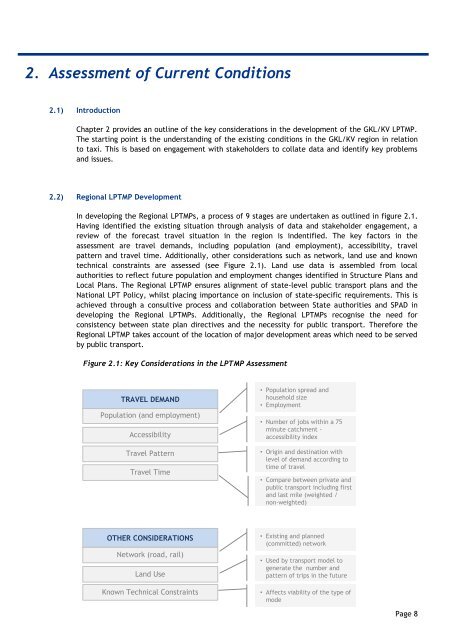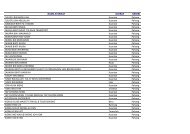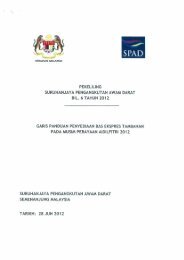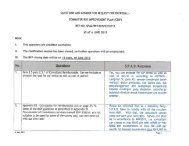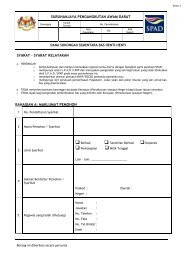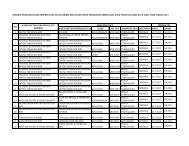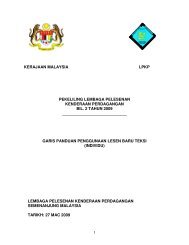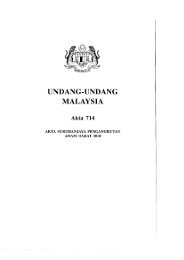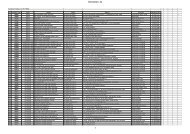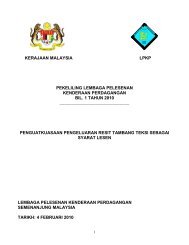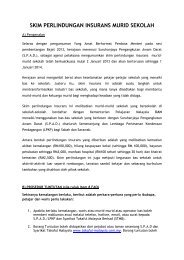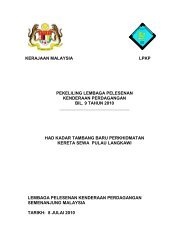4. Developing the Taxi Transformation Plan - SPAD
4. Developing the Taxi Transformation Plan - SPAD
4. Developing the Taxi Transformation Plan - SPAD
Create successful ePaper yourself
Turn your PDF publications into a flip-book with our unique Google optimized e-Paper software.
2. Assessment of Current Conditions<br />
2.1) Introduction<br />
Chapter 2 provides an outline of <strong>the</strong> key considerations in <strong>the</strong> development of <strong>the</strong> GKL/KV LPTMP.<br />
The starting point is <strong>the</strong> understanding of <strong>the</strong> existing conditions in <strong>the</strong> GKL/KV region in relation<br />
to taxi. This is based on engagement with stakeholders to collate data and identify key problems<br />
and issues.<br />
2.2) Regional LPTMP Development<br />
In developing <strong>the</strong> Regional LPTMPs, a process of 9 stages are undertaken as outlined in figure 2.1.<br />
Having identified <strong>the</strong> existing situation through analysis of data and stakeholder engagement, a<br />
review of <strong>the</strong> forecast travel situation in <strong>the</strong> region is indentified. The key factors in <strong>the</strong><br />
assessment are travel demands, including population (and employment), accessibility, travel<br />
pattern and travel time. Additionally, o<strong>the</strong>r considerations such as network, land use and known<br />
technical constraints are assessed (see Figure 2.1). Land use data is assembled from local<br />
authorities to reflect future population and employment changes identified in Structure <strong>Plan</strong>s and<br />
Local <strong>Plan</strong>s. The Regional LPTMP ensures alignment of state-level public transport plans and <strong>the</strong><br />
National LPT Policy, whilst placing importance on inclusion of state-specific requirements. This is<br />
achieved through a consultive process and collaboration between State authorities and <strong>SPAD</strong> in<br />
developing <strong>the</strong> Regional LPTMPs. Additionally, <strong>the</strong> Regional LPTMPs recognise <strong>the</strong> need for<br />
consistency between state plan directives and <strong>the</strong> necessity for public transport. Therefore <strong>the</strong><br />
Regional LPTMP takes account of <strong>the</strong> location of major development areas which need to be served<br />
by public transport.<br />
Figure 2.1: Key Considerations in <strong>the</strong> LPTMP Assessment<br />
TRAVEL DEMAND<br />
Population (and employment)<br />
Accessibility<br />
Travel Pattern<br />
Travel Time<br />
• Population spread and<br />
household size<br />
• Employment<br />
• Number of jobs within a 75<br />
minute catchment -<br />
accessibility index<br />
• Origin and destination with<br />
level of demand according to<br />
time of travel<br />
• Compare between private and<br />
public transport including first<br />
and last mile (weighted /<br />
non-weighted)<br />
OTHER CONSIDERATIONS<br />
Network (road, rail)<br />
Land Use<br />
Known Technical Constraints<br />
• Existing and planned<br />
(committed) network<br />
• Used by transport model to<br />
generate <strong>the</strong> number and<br />
pattern of trips in <strong>the</strong> future<br />
• Affects viability of <strong>the</strong> type of<br />
mode<br />
Page 8


